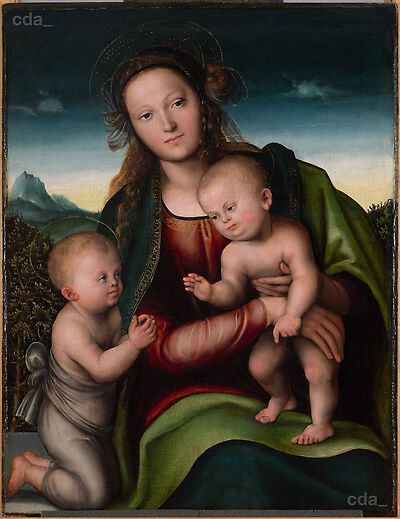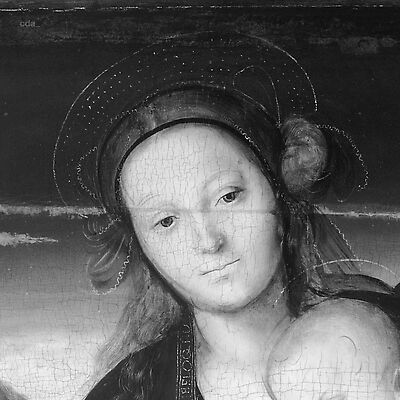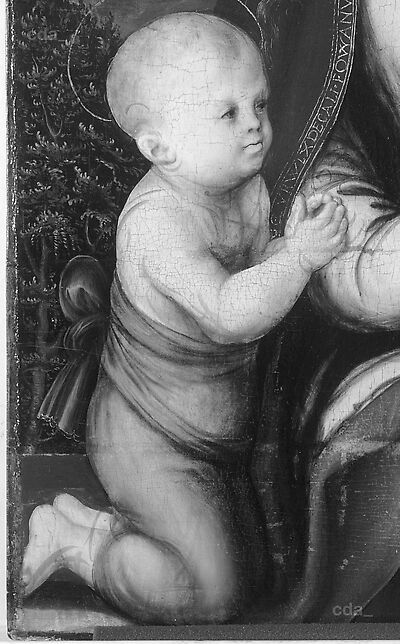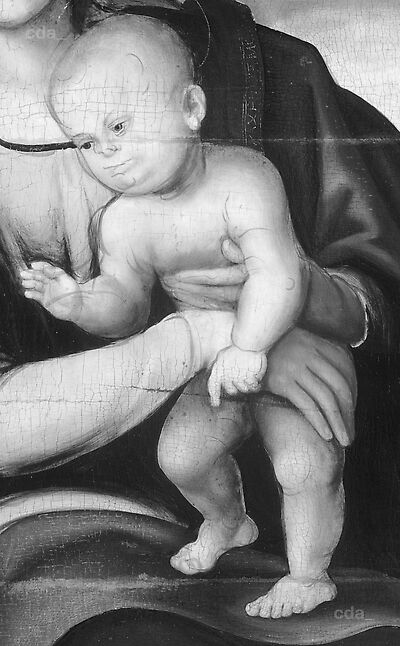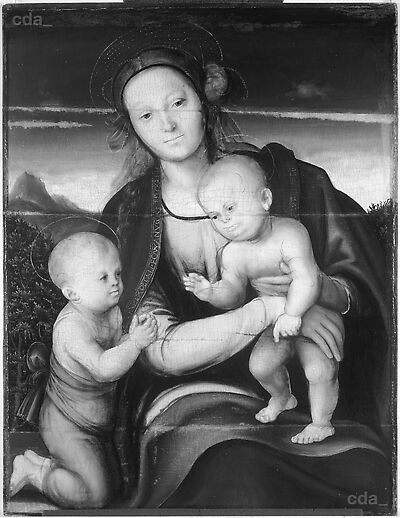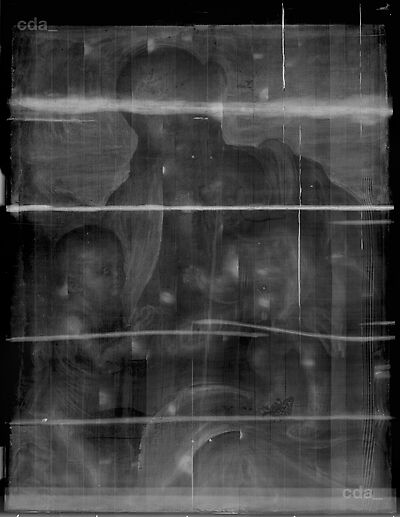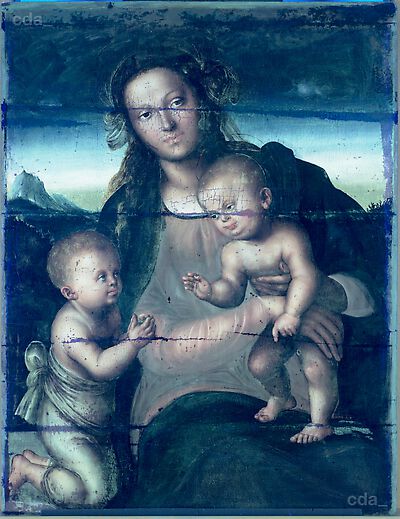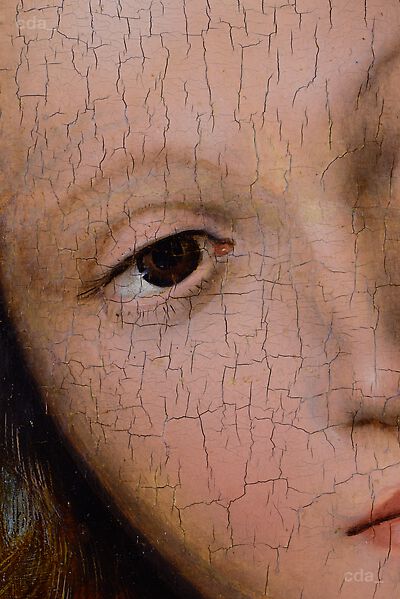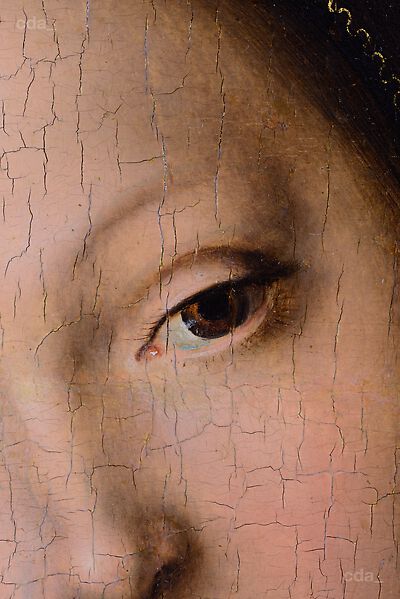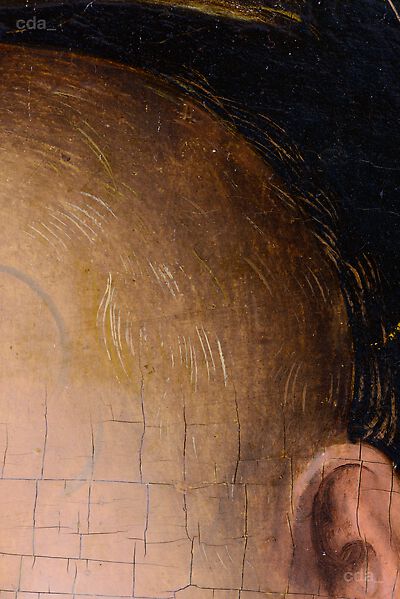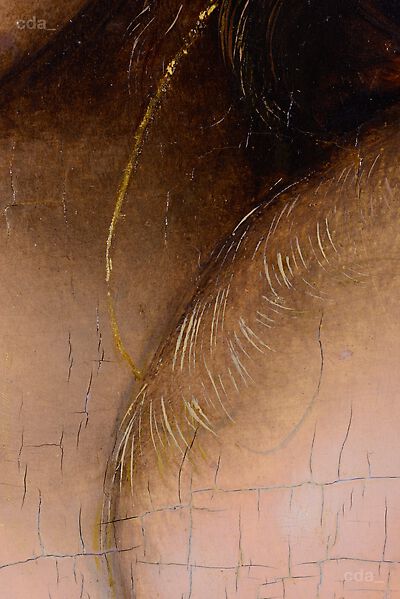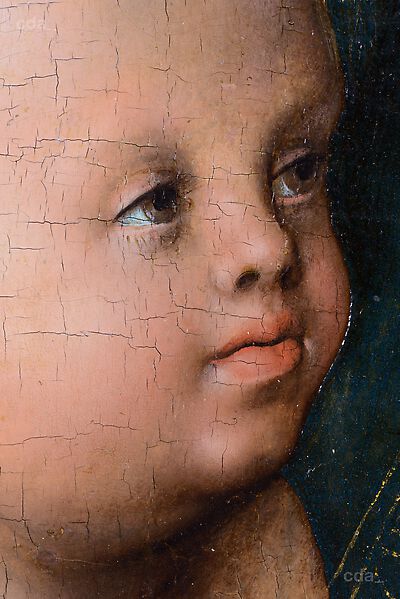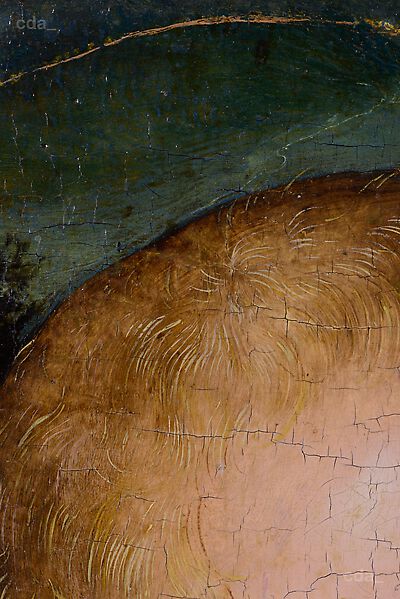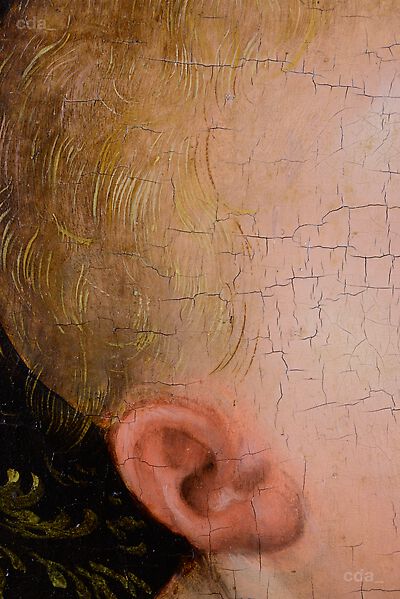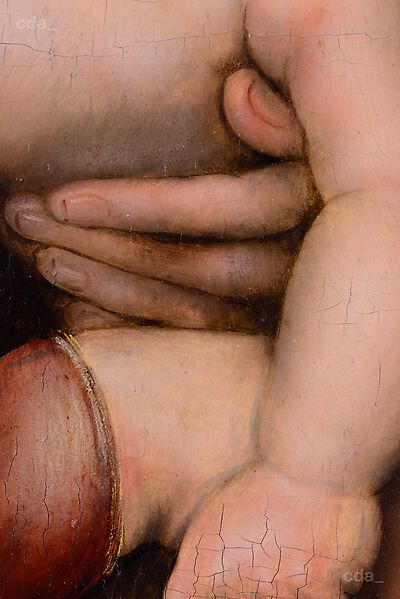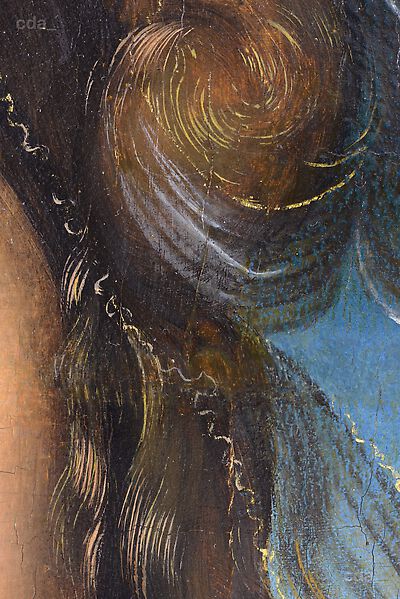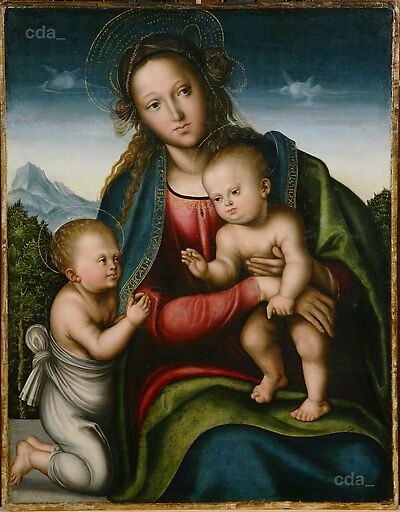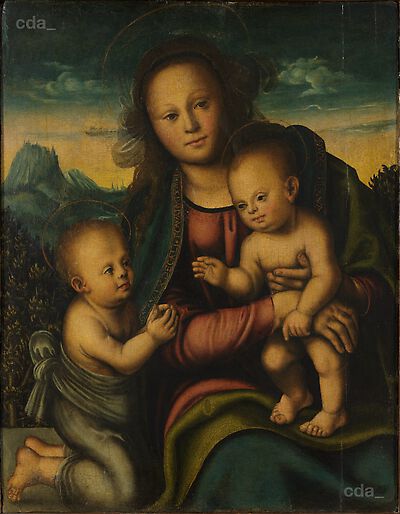Support
The panel (76.6 x 59 cm) most likely consists of five planks of varying widths. The wood species is a hardwood, probably limewood. The planks are aligned horizontally, transverse to the greatest expansion of the wood. The edges of the planks are not parallel. There is no evidence for a fibre application. The panel was thinned at a later stage on the reverse and reinforced with a blockboard. There is nothing to indicate that the dimensions of the panel were altered.
The proportions and the size of the support, the arrangement of the planks and their widths correspond roughly with those of the 'Virgin and Child and the infant St John' (about 1512, 75.9 x 59.4 cm, private collection, lucascranach.org/PRIVATE_NONE-P046). Lime wood was frequently used as a support for paintings north of the Alps. This was the preferred wood species in the Wittenberg workshop between 1505 and 1522 and in the period that followed was alongside beech wood the species most often used. The carpenter employed by Cranach between 1505 and 1512 (probably Michel Tischer) generally aligned the short sides of the planks, irrespective of whether the panel was to be used for a portrait or landscape format. This carpenter also frequently employed planks the edges that were not parallel and widths between 6 and 22 cml. Lime wood panels constructed after 1512 generally exhibit a different method of alignment, being aligned according to the longest side of the panel. When Cranach moved his workshop from the castle in Wittenberg to the town he probably employed another carpenter, whose working method differed. The horizontal alignment of the planks of this panel suggest that it was constructed before or about 1512. However a later date of production cannot be excluded.
Ground and Imprimatura
The panel has a white ground; it is probably a chalk ground (XRF analysis: calcium). The application of the ground does not extend to the edge of the panel, suggesting that the panel was fitted in a temporary frame at this stage. There is a barbe visible along all four edges. There is a black paint layer covering the bare wood along the edges of the panel.
Underdrawing
Using infrared reflectography a black underdrawing executed with a brush was made visible. The freehand and confident drawing of the figures concentrates on fixing the main contours and essential details with curved lines. The children's arms and hands are described with a few cursive lines and corrected during the painting process. Likewise the faces exhibit an econoomical initial design, which was subsequently defined in more detail during the painting process.
The majority of paintings by Cranach and his workshop from the period between 1510 - 1515 exhibit an economical underdrawing with a black medium. Particularly after 1510 a focus on essential contours employing short curved lines can be observed. The stylistic features of the underdrawing on this panel are similar to those on other compositions attributed to Lucas Cranach the Elder (e. g. FR 1978, 18, 20, 22, 29, http://lucascranach.org/F_MBAAB_896-1-54a, b).
Paint Layers and Gilding
To create the faces an initial pale admixture of lead white and vermilion pigments was employed. Shadows were modeled in grey paint and semi-transparent brownish-black glazes, with accents applied in reddish paint and highlights in pale flesh paint. The eyes including the eyelashes and reflections were painted with routine. The eyeball contains in addition to white a significant quantity of blue pigment (azurite). The beard and hair were executed in different colours and intensity using lead-tin-yellow (XRF) and defined with fine, directional strokes. In some areas (e. g. the head of the infant St John) short and broad dark yellow hair is covered with longer elegantly curved pink strands.
The sky and the landscape in the background have a grey underpaint (white and black pigments). A gradual gradation of tonal values between the zenith (grey-black) and the horizon (white) can be observed. Relatively coarse and intensely coloured particles of azurite (XRF) were subsequently used in admixtures of differing ratios with lead white and dabbed or applied in strokes. The horizon was brightened with a tone passing from pink to lead-tin-yellow (XRF). The clouds were applied wet-in-wet and the contours were blended with a soft brush. Minor corrections with a finely ground and less intense blue pigment were carried out on the hills. The group of trees in the middleground was executed over a black underpaint, employing different admixtures of light green and a final green glaze.
No significant changes were made to the composition during the painting process. A grey underpaint in the sky is often found on verified paintings by Cranach and his workshop. Likewise the use of various brushes and methods of application is a common feature of the workshop practice.
Shellgold
The haloes as well as the hems of veil, coat and dress are executed using shell gold - gold powder ground with an (oil) medium. Unusual in this context is the subsequent and confident execution of outlines on the haloes in pink as well as yellow and pink strands of hair.
In comparison with other gilding techniques employed in the Cranach workshop the use of shell gold is rare. The painting process is generally completed with the gold highlights. Here (as with PRIVATE_NONE-P046) subsequent accents were executed in paint.
[unpublished examinatioin report, G. Heydenreich, 2018]
